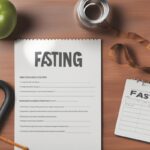Fasting, whether for religious, health, or personal reasons, is a practice that has been embraced across cultures for centuries. While the act of abstaining from food can have numerous benefits, such as improved mental clarity and digestive rest, the process of breaking a fast is equally important. If not done thoughtfully, it can lead to discomfort or health issues. This post explores gentle methods to end fasting, ensuring your body transitions smoothly back to regular eating habits. Let’s dive into safe, effective strategies to reintroduce food after a period of fasting.
Why Breaking a Fast Gently Matters
After a fast, your digestive system is in a delicate state. Prolonged abstinence from food slows down digestion, and suddenly overloading your system with heavy meals can cause bloating, stomach cramps, or even more severe complications like refeeding syndrome. Using gentle methods to end fasting helps your body gradually readjust to processing nutrients. This approach minimizes discomfort and supports overall well-being, making the post-fast experience as beneficial as the fast itself.
Start with Hydration: The First Step in Gentle Fasting Recovery
Before even thinking about solid food, hydration is key when breaking a fast. Your body may be dehydrated, especially after extended fasting periods. Begin with small sips of water to rehydrate your system. Avoid sugary or caffeinated drinks, as they can be harsh on an empty stomach. Instead, opt for lukewarm water or herbal teas like chamomile or peppermint, which soothe the digestive tract. For those who have fasted for more than 24 hours, consider adding a pinch of salt to your water to replenish electrolytes. This gentle rehydration primes your body for the next steps in ending a fast.
Introduce Easy-to-Digest Foods Gradually
One of the most effective gentle methods to end fasting is to start with easily digestible foods. Think of foods that require minimal effort from your stomach and intestines to break down. Bone broth, for instance, is an excellent choice as it provides hydration, electrolytes, and essential nutrients without overwhelming your system. Other options include steamed vegetables, small portions of cooked rice, or a banana for a touch of natural sweetness and potassium. Avoid raw foods initially, as they can be harder to digest after a fast. The goal is to reintroduce food in a way that feels light and nourishing. For more on post-fast nutrition, check out our guide on Post-Fast Meal Planning.
Portion Control: Small and Frequent Meals
When employing gentle methods to end fasting, portion control is critical. After fasting, your stomach capacity may have temporarily reduced, and overeating can lead to discomfort or nausea. Start with small portions—think a quarter of your usual meal size—and eat slowly to gauge how your body responds. Aim for multiple small meals or snacks throughout the day rather than three large ones. For example, after breaking your fast with a small bowl of broth, wait a couple of hours before having a light snack like a handful of soaked nuts or a piece of fruit. This gradual approach helps your digestive system ease back into its normal rhythm. Learn more about mindful eating in our article on Mindful Eating Practices After Fasting.
Avoid Common Pitfalls When Breaking a Fast
While it’s tempting to indulge in your favorite foods after a fast, certain choices can derail your recovery. Avoid heavy, fatty, or processed foods, as they can shock your system and cause digestive distress. Similarly, steer clear of high-sugar foods or drinks, which can spike blood sugar levels and lead to energy crashes. Alcohol should also be avoided in the initial days post-fast, as it can dehydrate you and irritate your stomach lining. Stick to gentle methods to end fasting by prioritizing whole, nutrient-dense foods that support recovery. For tips on avoiding digestive issues, see our post on Common Fasting Mistakes to Avoid.
Listen to Your Body for a Personalized Approach
Every body reacts differently to fasting and the process of breaking it. While general guidelines for gentle methods to end fasting are helpful, tuning into your body’s signals is essential. If you feel bloated or uncomfortable after eating a certain food, take a step back and try something lighter. Keep a journal to track how different foods affect you post-fast, and adjust accordingly. Some people may need a longer transition period, while others can resume normal eating more quickly. Personalizing your approach ensures a smoother and more comfortable recovery. Explore more personalized fasting tips in our piece on Customizing Your Fasting Journey, or dive into the benefits of intermittent fasting with Intermittent Fasting for Beginners.
Disclaimer: The information provided in this post is for educational purposes only and should not be considered medical advice. Fasting and breaking a fast can have different effects on individuals, especially those with underlying health conditions. Always consult a healthcare professional or nutritionist before starting or ending a fast to ensure it is safe for your specific circumstances.
References
- Harvard Health Publishing – Intermittent Fasting: Surprising Update
- Mayo Clinic – Fasting Diet: Can It Improve My Health?
- National Center for Biotechnology Information – Refeeding Syndrome: A Literature Review
- WebMD – Fasting Diets: What You Need to Know
- Academy of Nutrition and Dietetics – What You Need to Know About Fasting
This content is for informational purposes only and not a substitute for professional advice.






